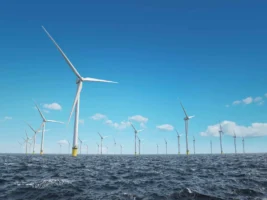The cost of large scale solar projects in India is expected to fall again in an upcoming auction, further undermining the case for new coal generators, and the economics of importing coal from mega projects such as the Galilee Basin.
New analysis from researchers at Deutsche Bank suggest that prices for large scale solar projects are likely to fall to around 4.70 rupees per kilowatt hour, well below the Rs5.05/kWh achieved in the last auction.
This will further undermine the case for imported coal, which requires prices of more than Rs6/kWh to make a return, and explains why the Indian government is so focused on solar, and domestic coal, to meet its power needs.
It also explains why groups such as Reliance Power are dumping their international coal mines to focus on domestic solar projects.
Adani is also committing to large domestic solar projects, and is even canvassing solar projects in Australia, although it is yet to renounce on its plans for the controversial, $16 billion Carmichael coal project in the Galilee Basin.
Australia’s energy minister Josh Frydenberg was ridiculed this week when he suggested there was a “moral case” for Australia to export coal to India and other developing countries. Apart from the environmental and climate impacts of coal, the statement ignores basic economics.
The Deutsche Bank analysts say that solar in India is now falling to 90c/watt – and tier 2 module suppliers are selling panels below 50c/watt. The India solar market may finally be “ready to take off”, the analysts say.
“Recent growth of solar in India has been fueled by grid parity, not by subsidies,” they note.
India has set a target of 100GW of solar by 2022, and this may be raised significantly if it also commits to 40 per cent renewables by 2030.
So far, the market has started slowly. But Deutsche Bank says the improving economics means that the Indian market is likely to treble to an annual run rate of 8GW to 10GW in the ext 12-18 months, compared to just 3GW for 2015.
The Deutsche Bank reported that India does not actually suffer from a power shortage – at least not in those areas connected to the grid. Deutsche Bank says India has 280GW of power capacity, and peak demand of just 145GW. Even with technical issues, it can easily account for those peaks.
The problem India has is catering for growing demand, particularly as the economy expands and power is delivered to the several hundred million people not yet connected to the grid. It sees solar – particularly distributed solar which does not need a grid – as the solution.
The energy markets in India and other developing countries are likely to focus in large part on distributed renewables, and a series of micro-grids, in much the same way as new technology enable them to leap-frog fixed line telephony and the fax machine.
“Power generation is not a problem in India today, but given the demand growth expectations and the fact that public/private investments in power projects have been next to nothing, the Indian government sees a potential power shortage in India over the next five years,” the Deutsche Bank analysts wrote.
“In this context, Indian government’s 100GW solar announcement appears to be an interesting strategy to get smaller private developers (domestic and international) to invest in the power sector.
The forecast results of the upcoming solar auction continue the dramatic fall in solar costs in India. Imported coal has become the most expensive source of incremental electricity generation,” Jai Sharda, t a financial expert from Equatorial research, said recently.
Reliance Power this week announced it would sell three coal mines in Indonesia that were supposed to be supply coal for an ultra mega power plant that the company was building.
Work on the 3,960MW power plant at Krishnapatnam has now stopped because the company says the power supply from the plant will be too expensive with imported coal.
Instead, it will focus on large scale solar, and has signed an agreement with the state government of Rajasthan to set up 6 GW solar power capacity. It already operates one large solar PV plant and a concentrated solar thermal power project in India.
Adani has been talking to landowners in Queensland about the possibility of building a solar park in the heart of the coal mining province of the Bowen Basin.
In India, Adani recently announced it would look to build 10 gigawatts of solar and has agreed with the government of Rajasthan to set up a 10,000MW solar park in that state. It has also signed a deal with SunEdison to invest $US4 billion in a solar PV manufacturing facility in the state of Gujarat.










